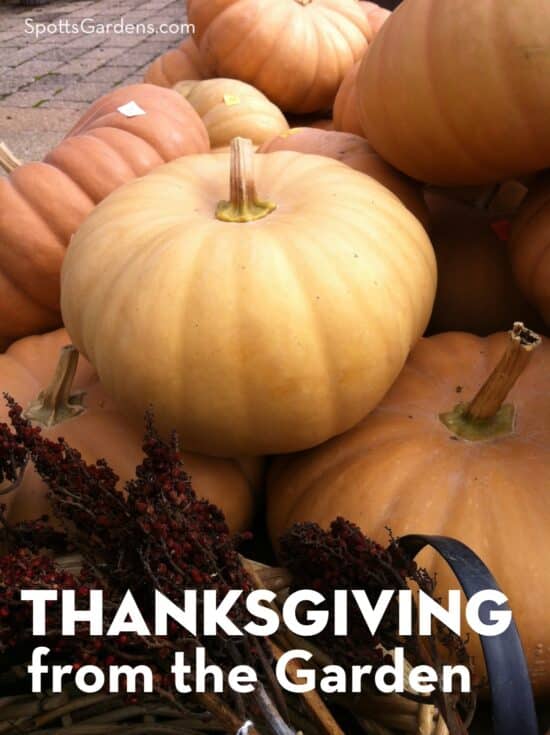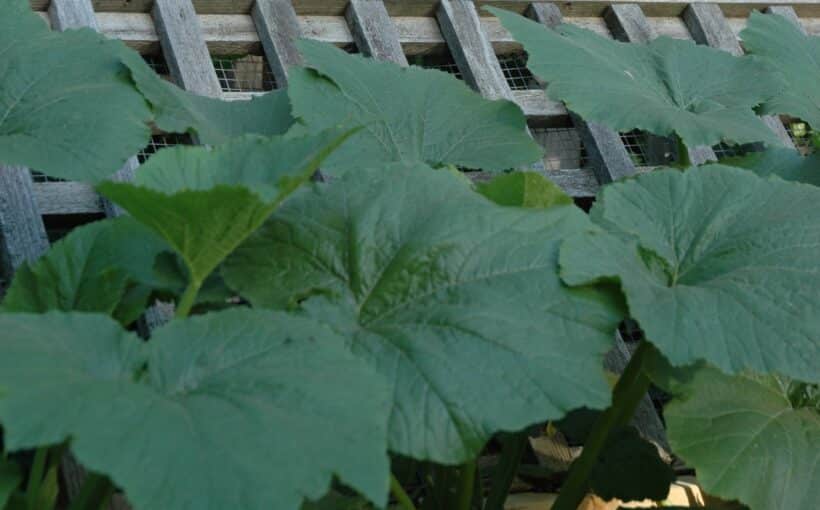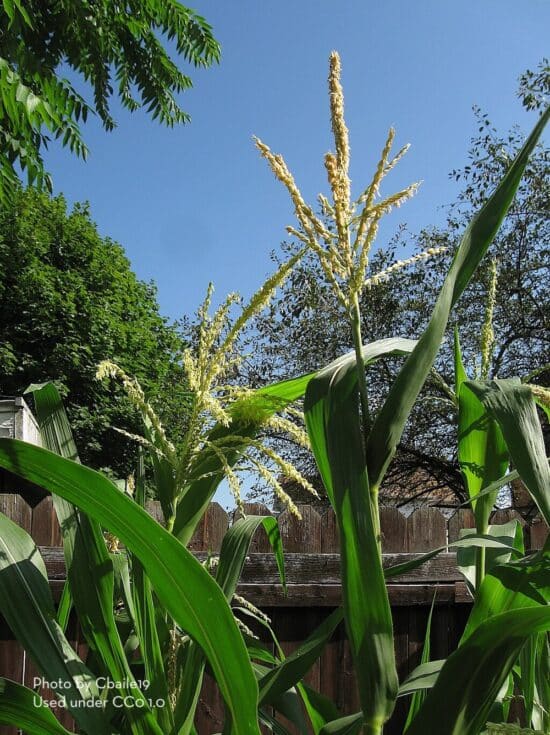From the turkey to the pumpkin pie, our native foods take center stage at Thanksgiving. Read on for our favorites, and add some to your planting list for next year’s garden. You’ll be able to serve them at your next Thanksgiving!
Pumpkin (Cucurbita spp.)
As centerpiece or pie filling, pumpkin is a Thanksgiving staple! The orange squash we think of as pumpkins are mostly Cucurbita pepo, with other species including C. maxima, C. argyrosperma, and C. moschata. Squash of all kinds is native to the Americas.
Pumpkins go way back! They’ve been a staple food for both people and domestic animals throughout the history of the Americas. Remains of C. pepo have been found in Mexico and dated to around 8750 BCE!

When growing pumpkins at home, make sure you have a lot of space. In a small garden, consider growing mini-pumpkins like Jill-Be-Little up a trellis instead. Pumpkins are heavy feeders, so give your pumpkins full sun and rich soil.
Corn (Zea mays)
Whether you eat it as cornbread, stuffing, or the token bowl of vegetables on the Thanksgiving table, corn was a principal food of Native Americans across the continent. Today, you might grow super-sweet corn (Zea saccharata or Zea rugosa) in the back garden for fresh eating, or one of the many stellar flour corns (Zea mays amylacea). Or do you prefer popcorn (Zea mays everta)?
Grow corn in full sun in well drained soil. Corn is wind-pollinated. Because sweet corn yields only a couple of ears per plant, it’s best grown in large gardens. But you can be with it in a small garden, provided you plant it in blocks rather than rows to ensure pollination.
In next year’s garden, consider growing corn as the Three Sisters of Indigenous American agriculture. In this polyculture system, corn is planted in hills a few feet apart. The same hills are sown with beans, and squash grows throughout the field between the hills. The corn provides a pole for the beans to climb, the beans return nitrogen to the soil, and the squash’s leafy vines provide a living mulch.
Potato (Solanum tuberosum)
Thanksgiving without the mashed potatoes is inconceivable, but this tuber would not have been available at the first Thanksgiving. Native to the Andes region of South America, the potato was a carried to Europe by conquistadors in the 1500s and from there spread to the rest of Europe. The first permanent potato patches were grown in America by Irish and Scottish settlers in the early 1700s. That’s a long way around for this mainstay of Thanksgiving foods!

Potatoes are part of the nightshade family, which also included tomatoes, peppers, and eggplants. They’re so easy to grow that they make an excellent source of homegrown carbohydrates. Potatoes rank 4th in as the largest yielding crop in the world, and they take up far less space than the three leading cereal crops do.
The key to high potato yield is “hilling up”, or covering the plants as they grow. By mounding soil over the stem, you provide more room along the stem for tubers to develop. This growth habitat also makes them a cinch to grow in barrels or raised beds. Hilling up also prevents the tubers from turning green and building up toxic solanine on exposure to sunlight.
Grow Your Own Feast
So enjoy as you dig into native Thanksgiving foods at the table this year. Maybe by next year, you’ll be harvesting your own!
We can help you create the perfect kitchen garden. Contact us today to discuss raised beds, crop planning, and other ways to increase your home-grown yield.

